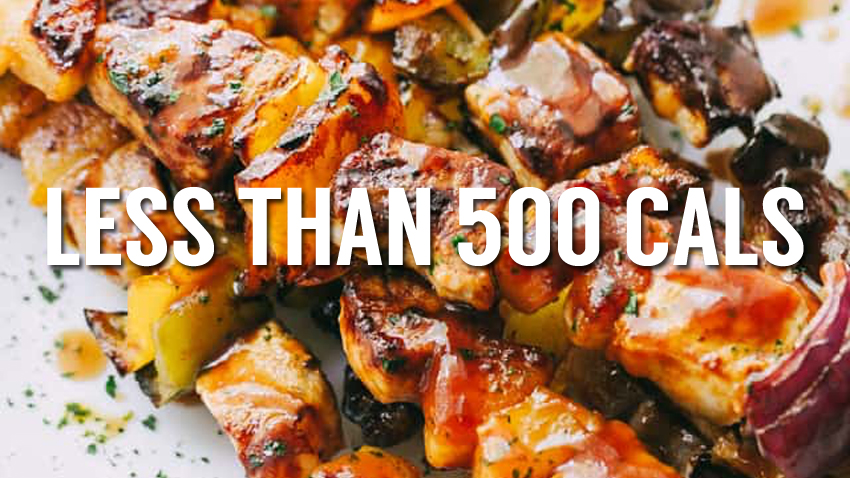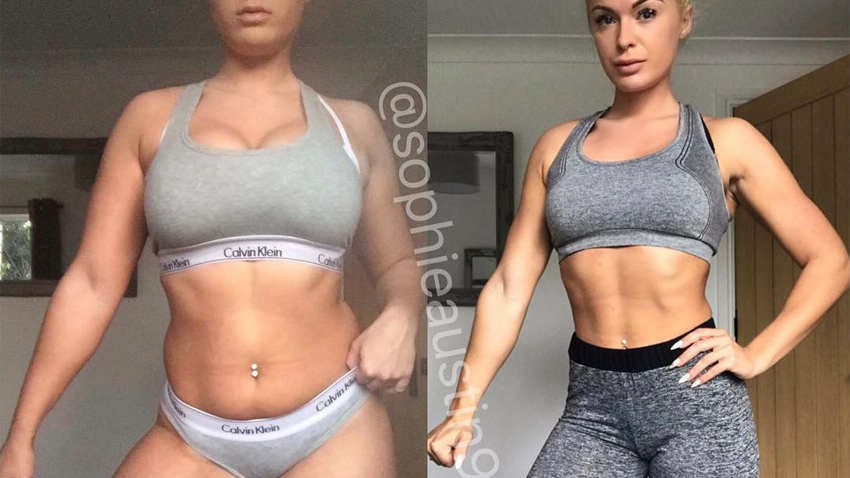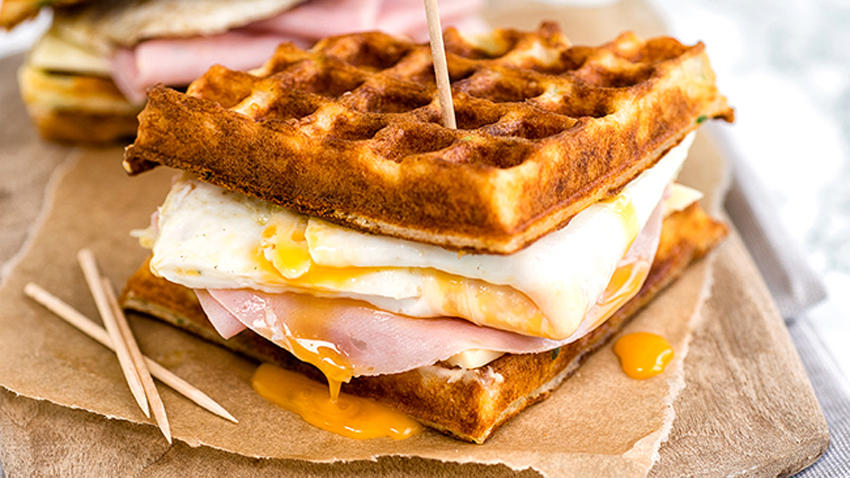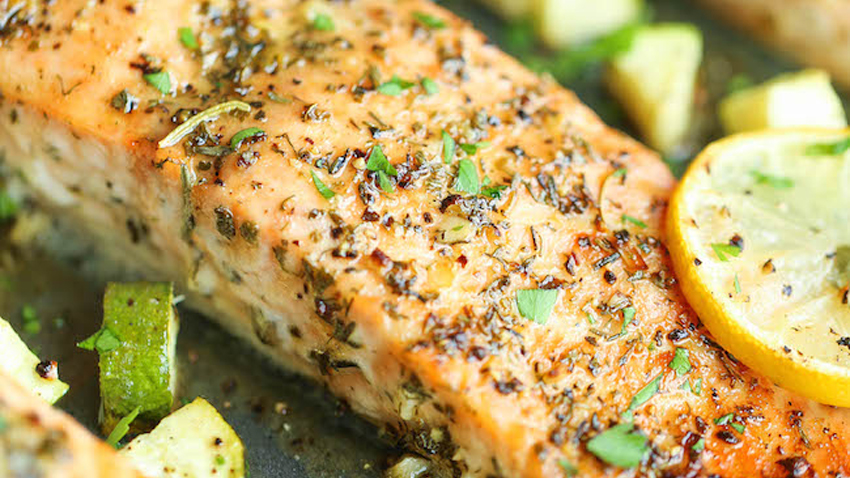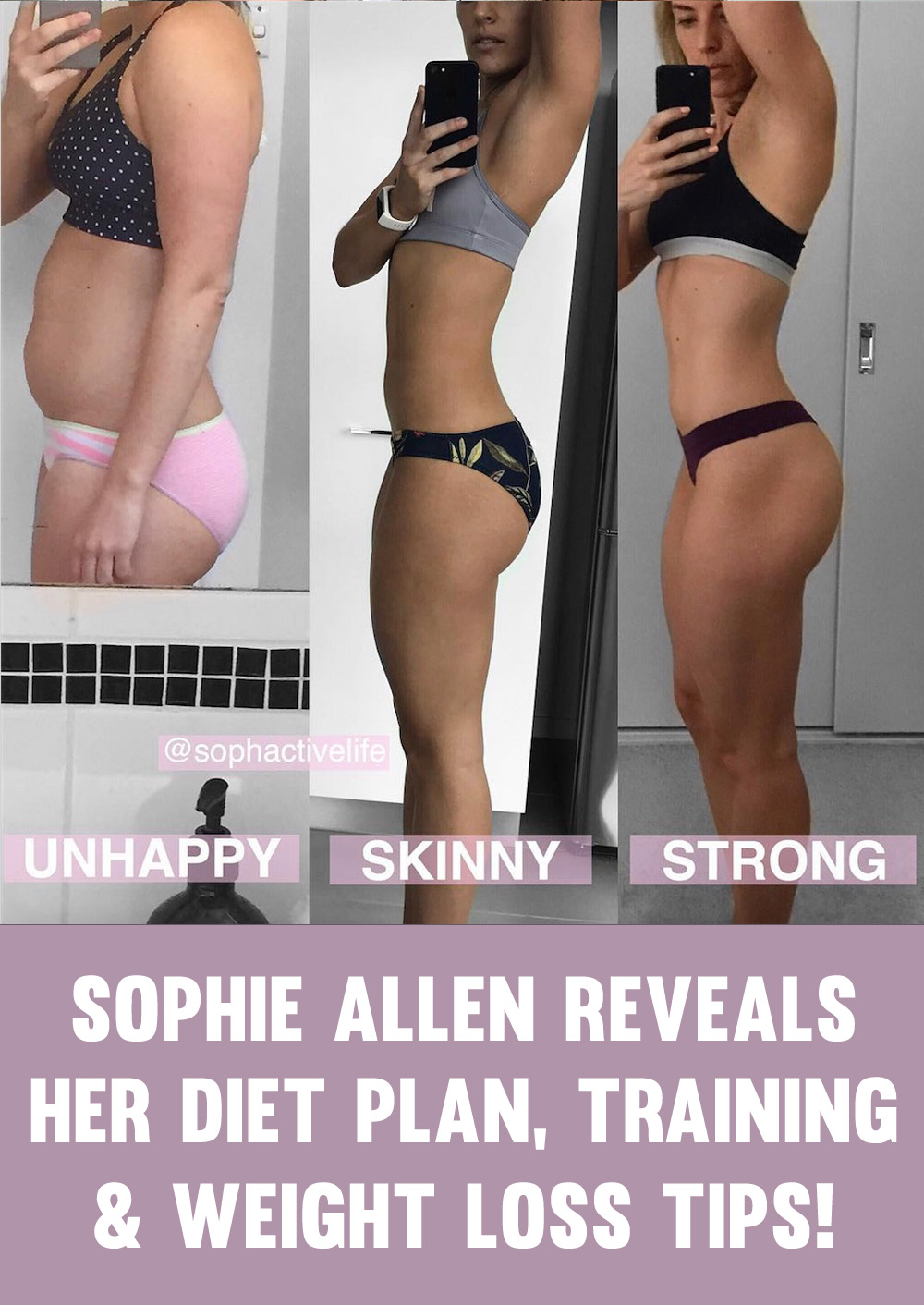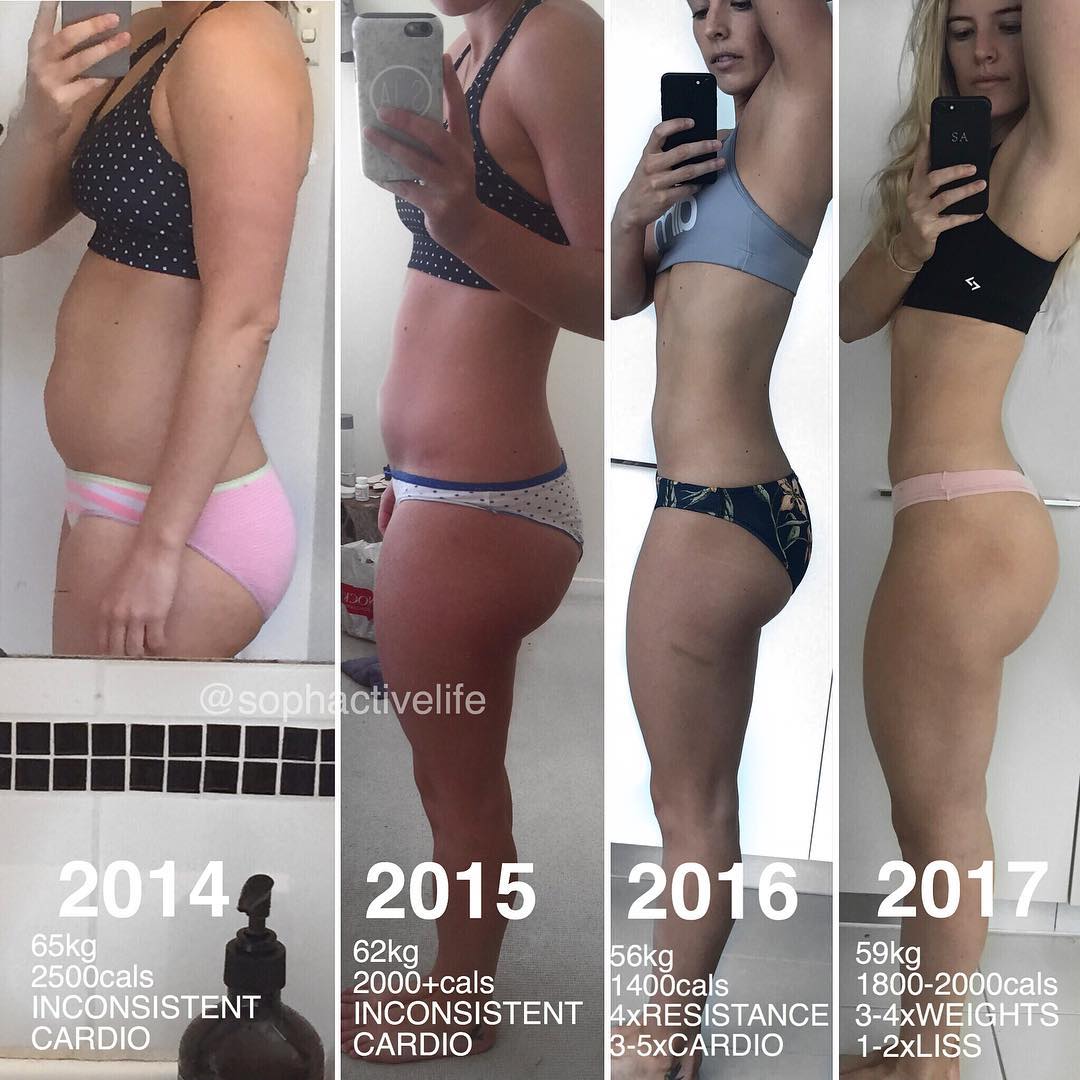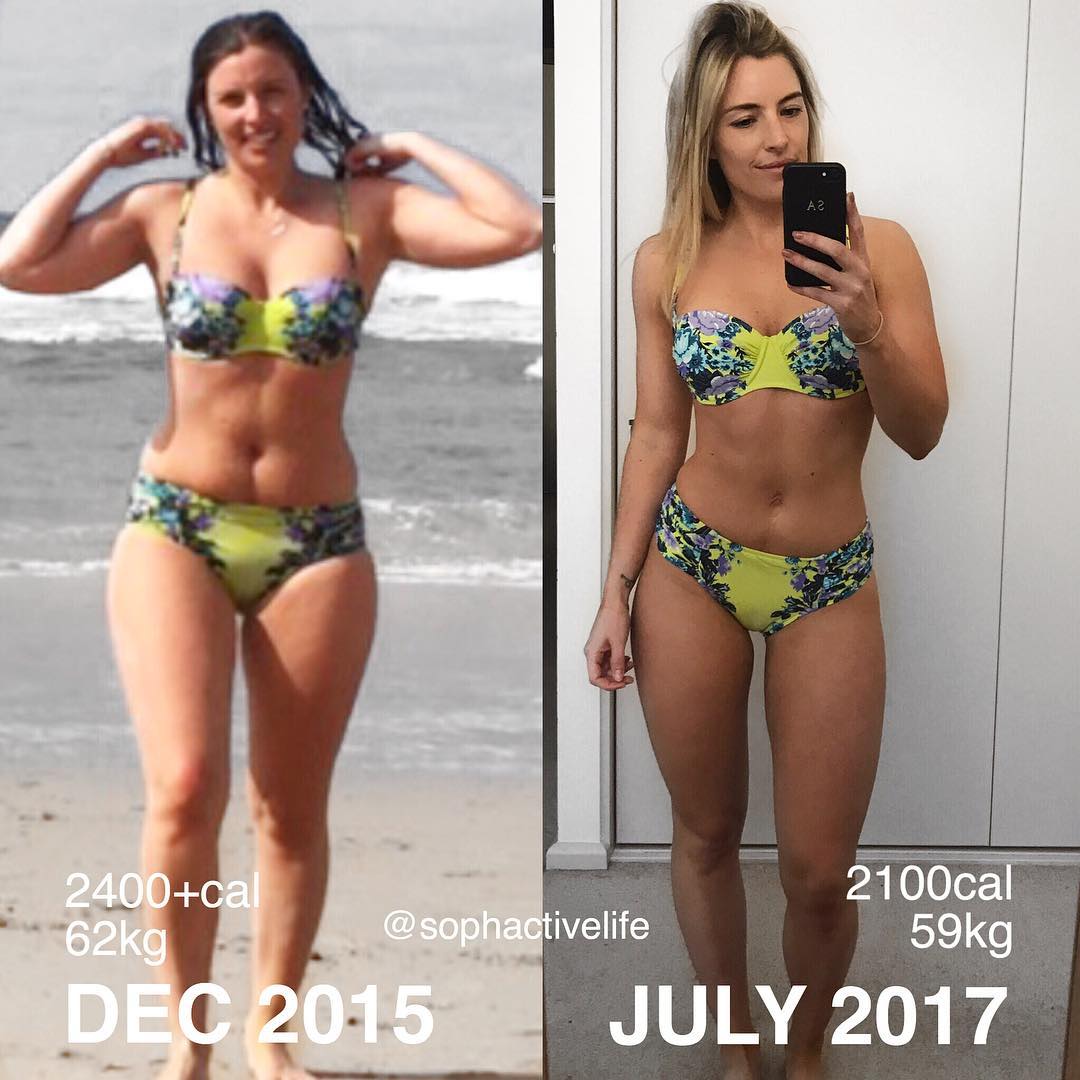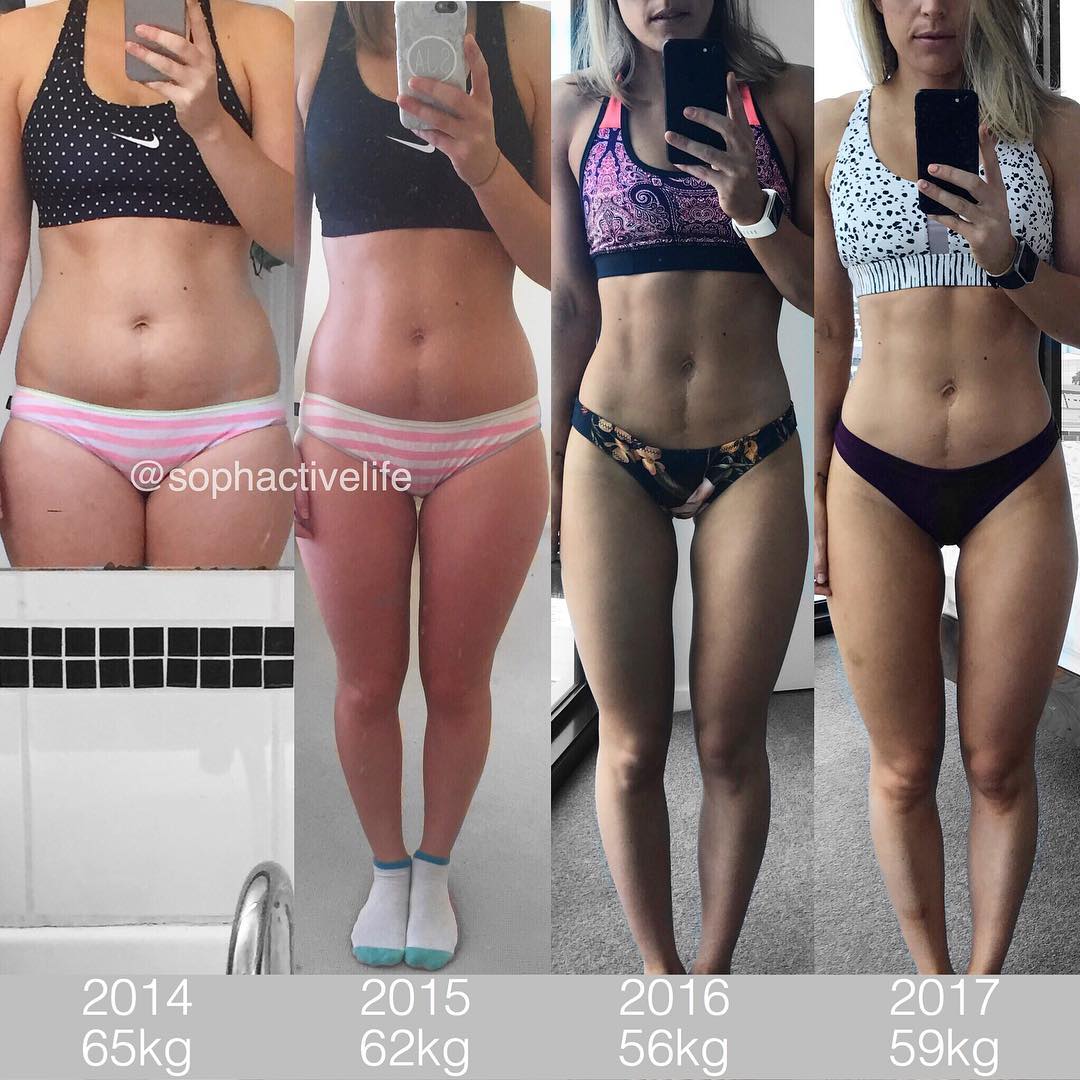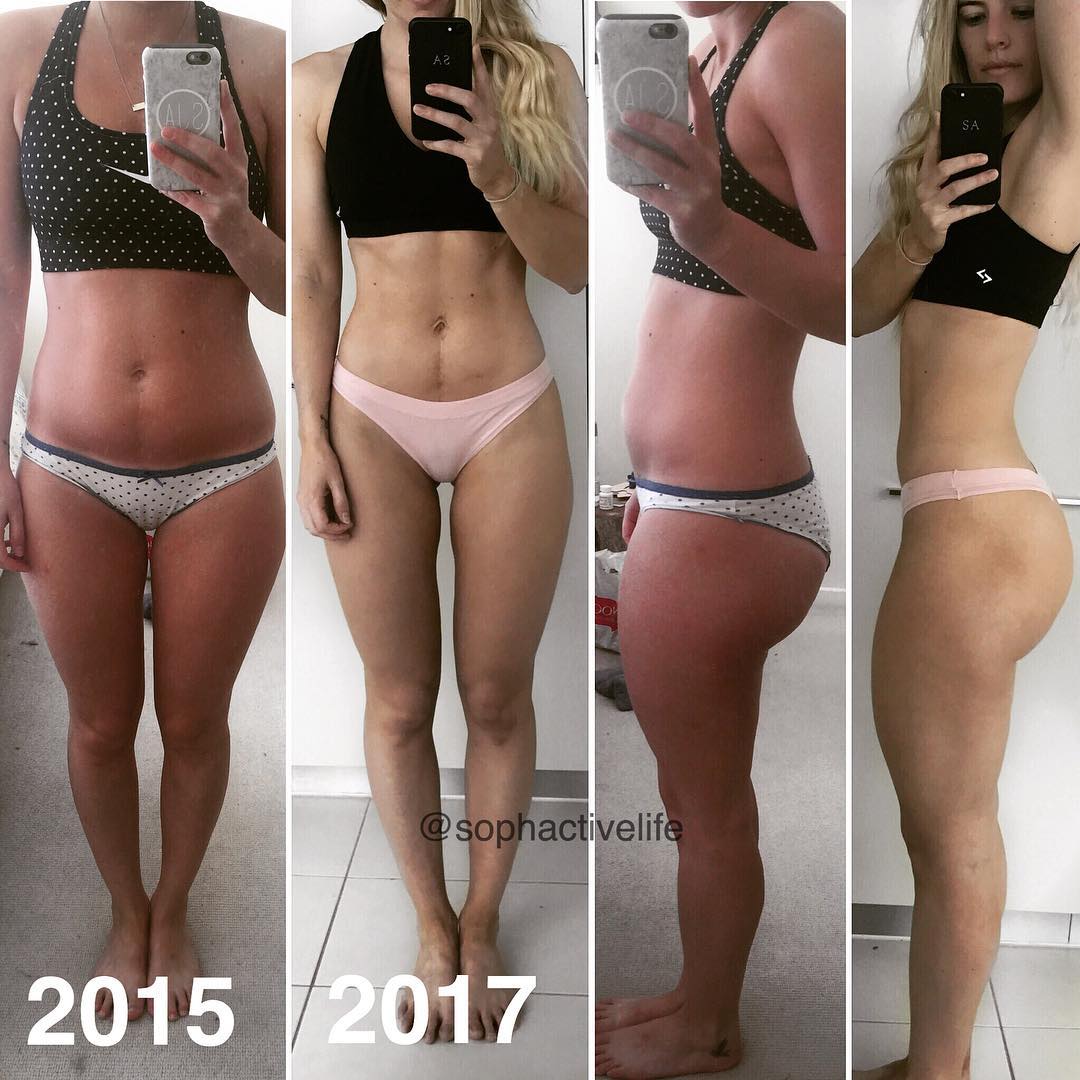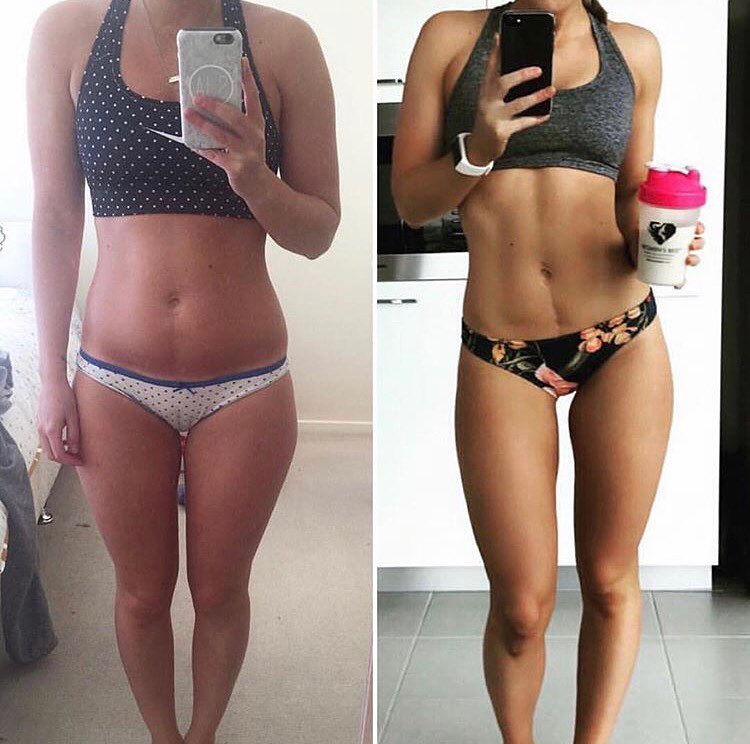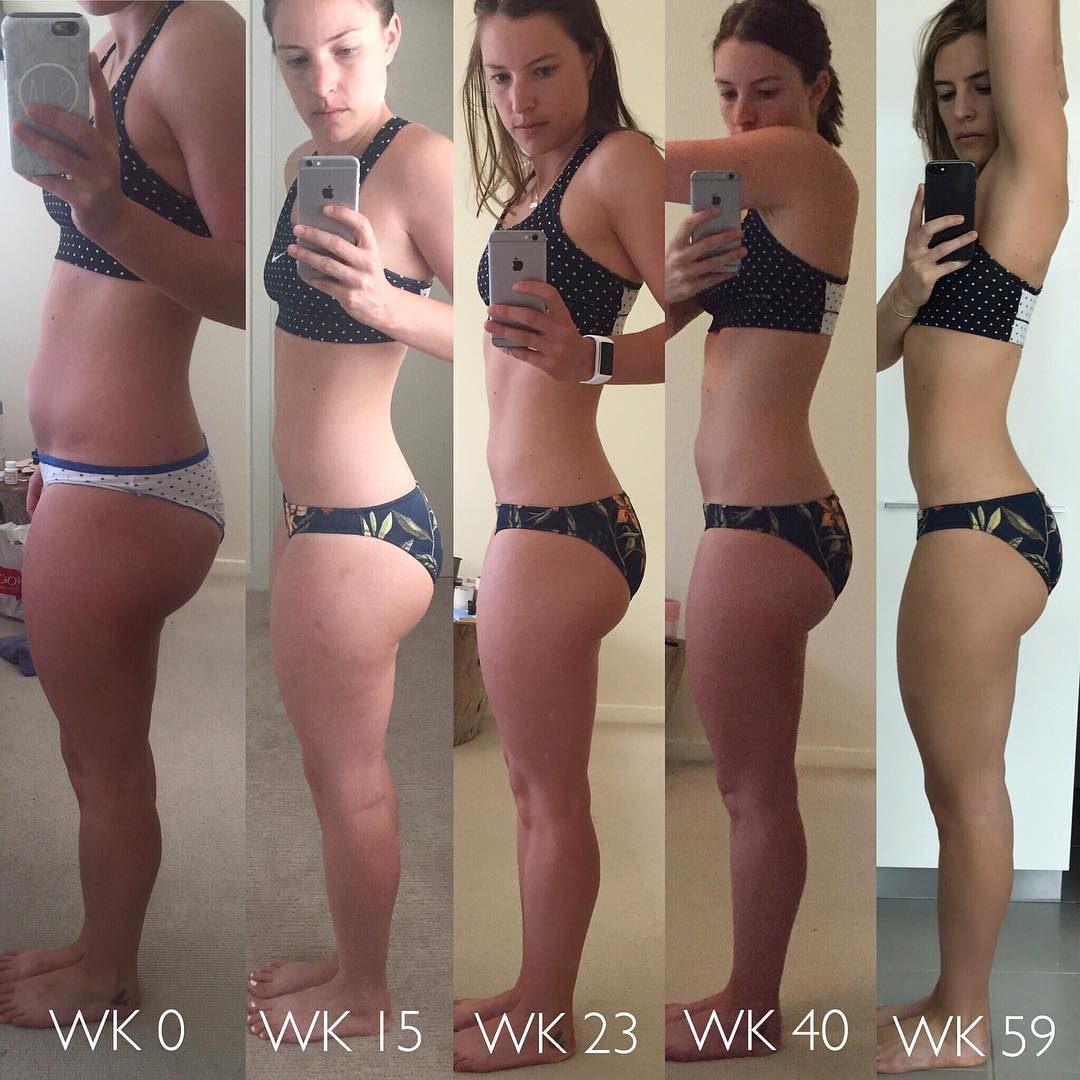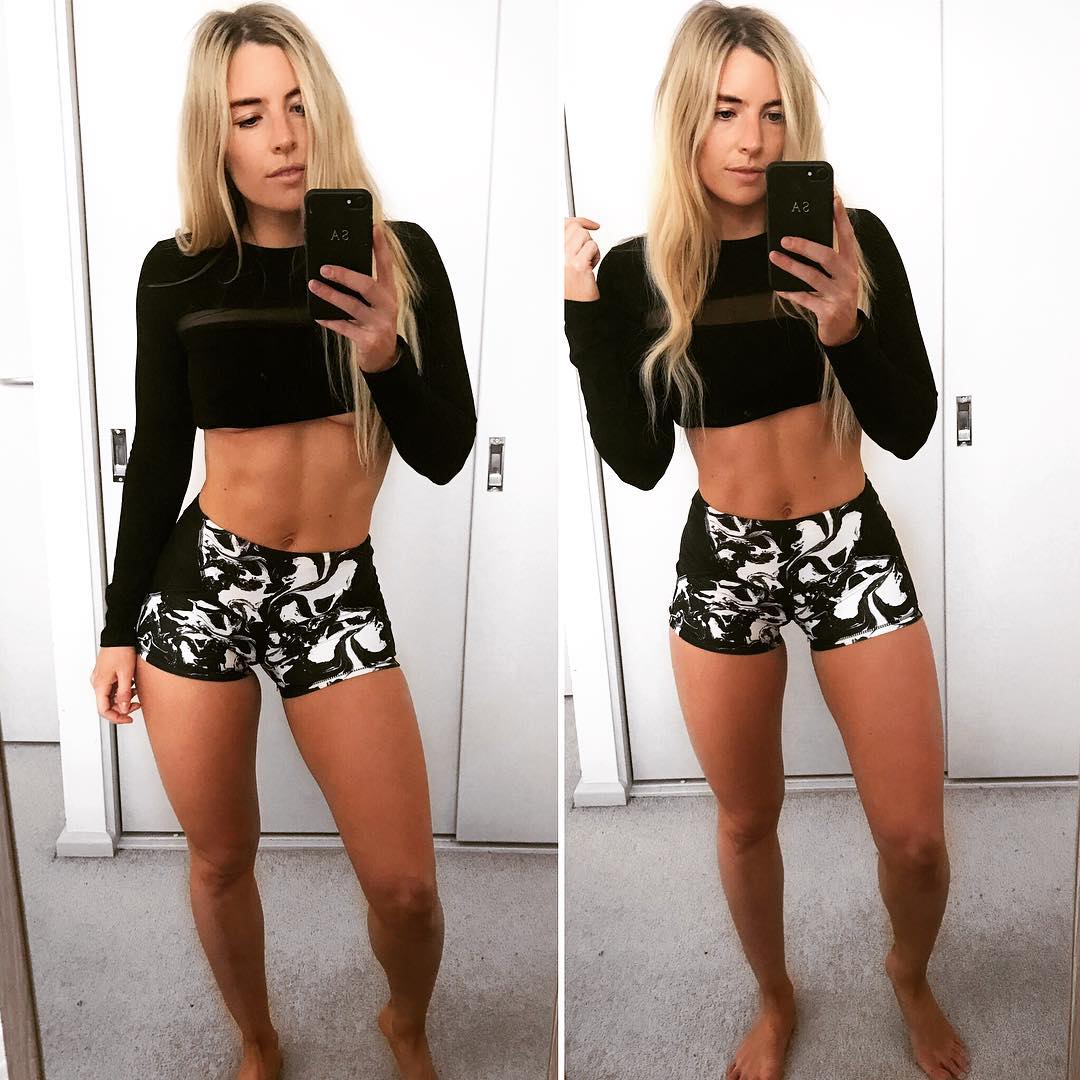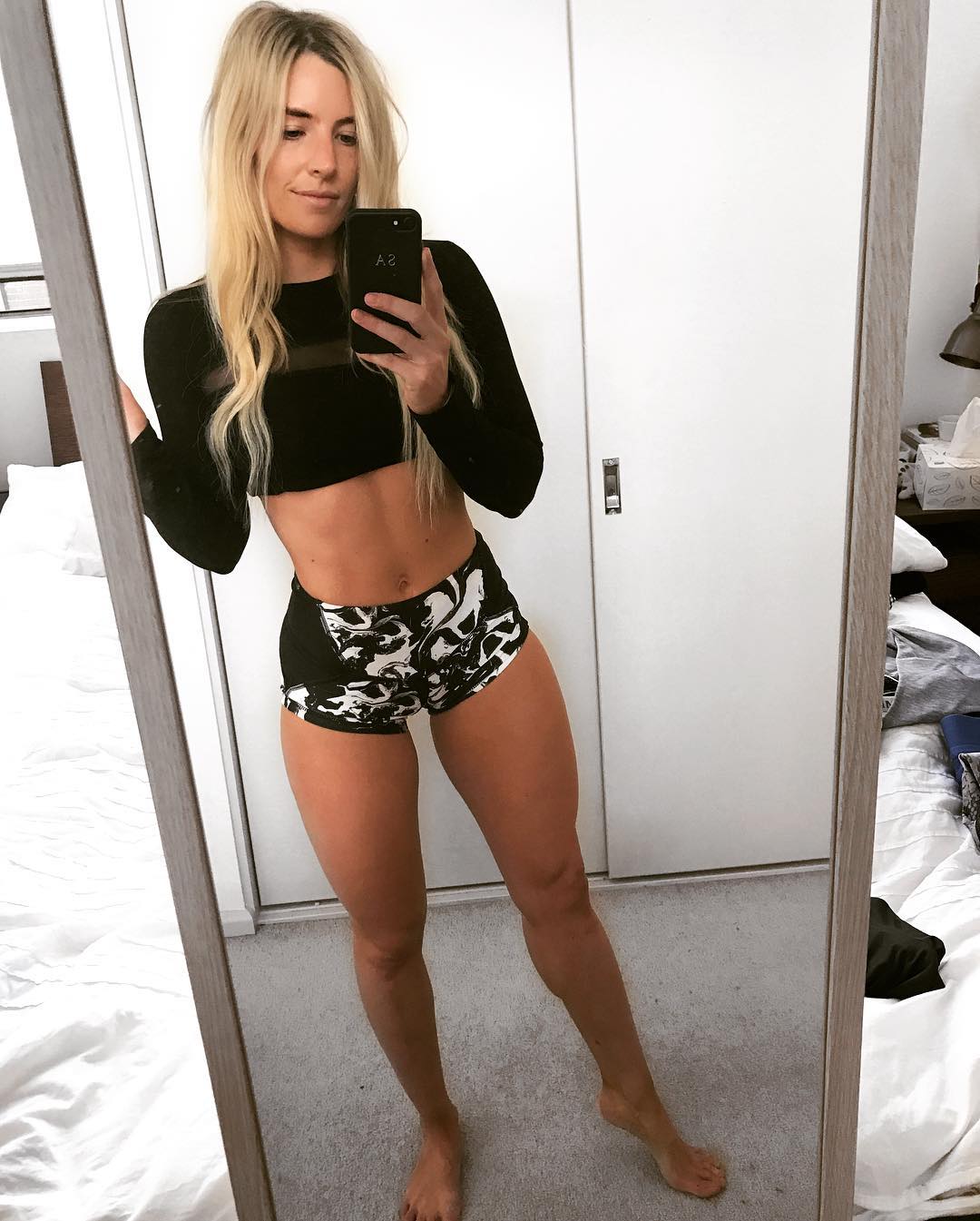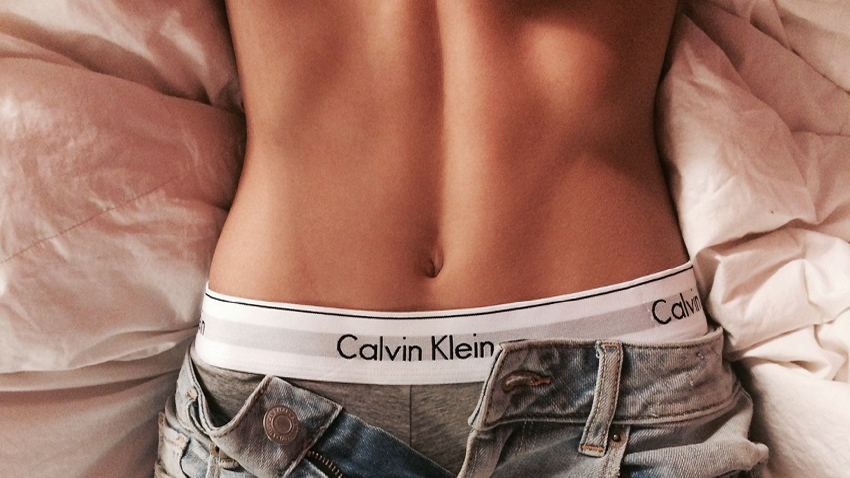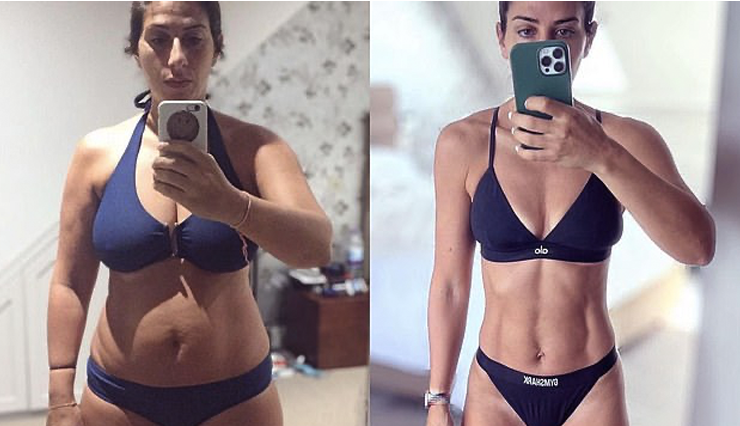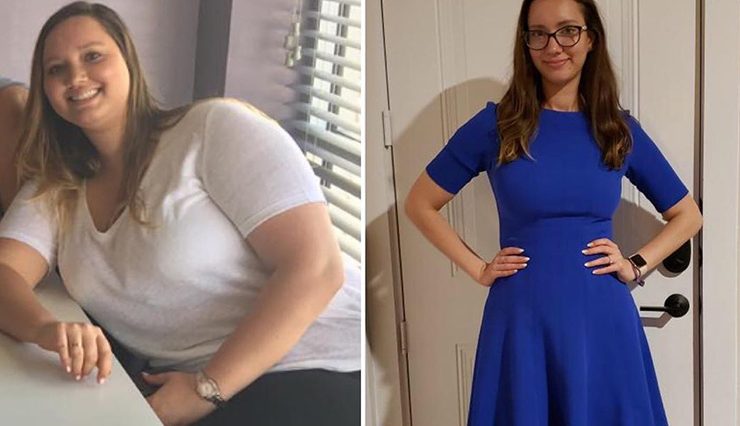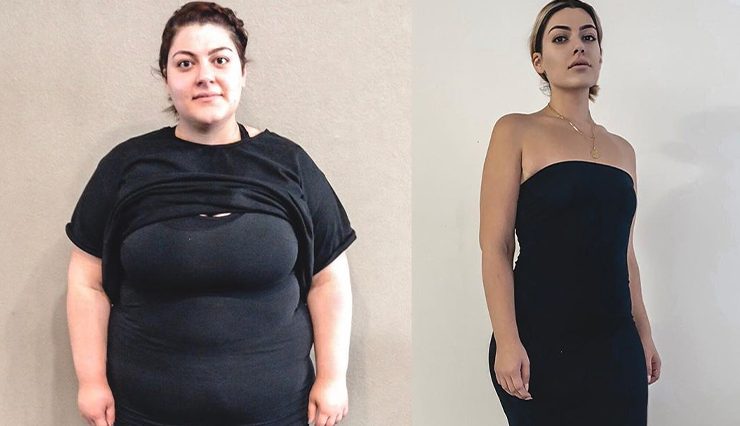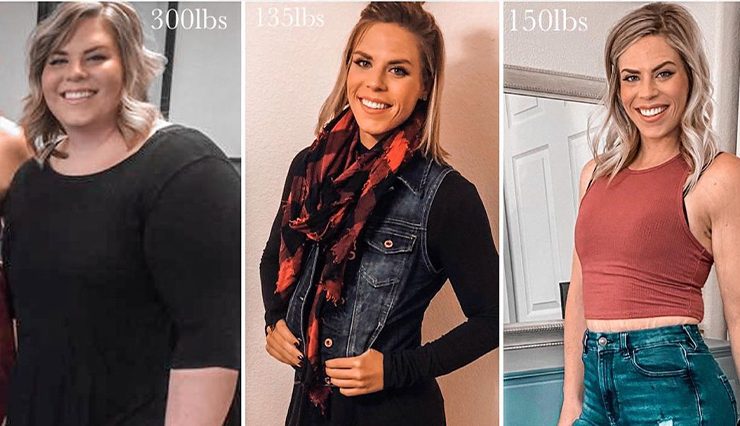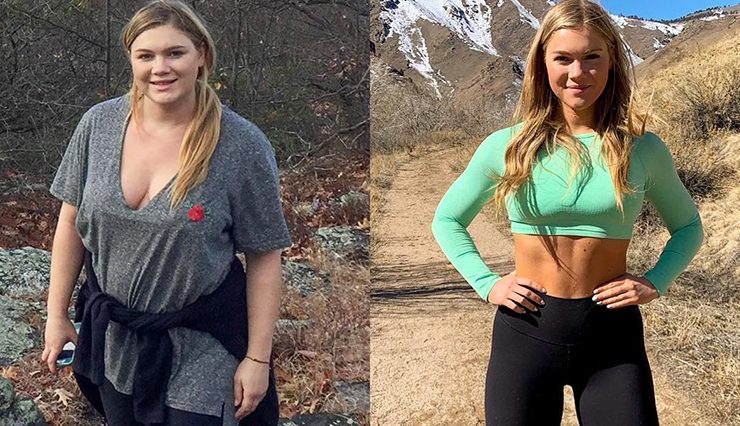Sophie Allen Reveals Her Transformation Diet, Training & Weight Loss
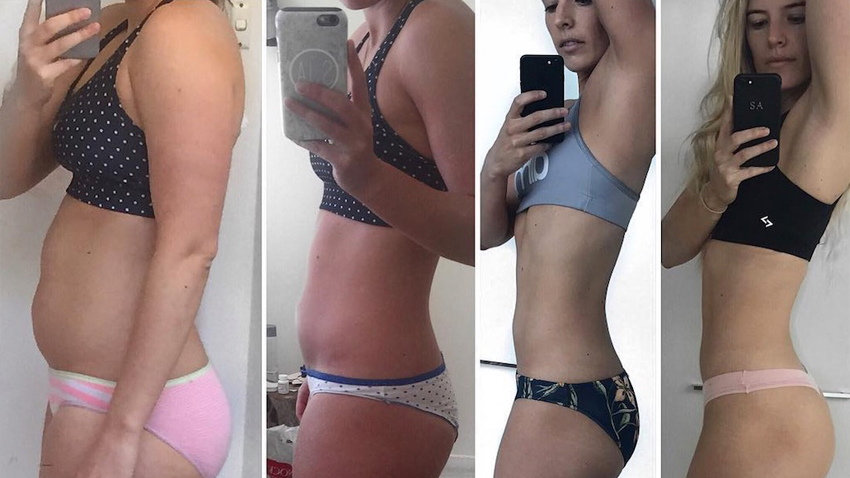
Trimmed&Toned Team.
Sophie Allen was hospitalised for a month in 2011 because of an endometriosis surgery gone wrong. While she was recovering, she wanted to feel healthy, fit and strong again and wouldn’t stop until she got there.
Currently training to be a personal trainer and inspiring over 160,000 followers on Instagram, Sophie is passionate about sharing her knowledge and letting people know that eating well, training hard and a balanced lifestyle is important for a healthy body and mind.
“I believe this, because I have experienced the self loathing and self consciousness that comes with feeling unhappy in your skin, by emotionally eating in an attempt to fill that void inside of me, and never being able to stick to any form of exercise routine until I realised I needed to re-adjust the way I approached health and fitness.”
Below, Sophie reveals how she started in fitness, what it took to see serious results and her diet and training plan. Her insight into changing her body composition and transforming her life is something everybody should learn from.
Be Sure To Follow Sophie On Her Social Media Here:
Instagram: @sophactivelife
Website: sophactivelife.com
Youtube: @sophactivelife
You’ve Completed An Amazing Transformation! What Was Your Diet And Training Like Originally?
I never had a consistent diet or exercise plan I stuck to, I used to run randomly (I thought cardio and running were the only way to get fit). I ate pretty much whatever I wanted, it was a pretty high carb + fat diet when I think back to it. Including eating out, take away, sweet treats every night. I was still eating whole foods, but I had no idea of portion sizes for my energy expenditure (pretty damn minimal).
What Mistakes Did You Make And What Changes Did You Implement To Start Seeing Serious Results?
I wouldn’t say I’ve made mistakes, I was never someone who under ate, binged, starved myself etc.. regardless if you have done that, they’re all experiences that you’ll learn from. The biggest reason I never saw results was because I was never consistent with anything. As soon as I started seeing any kind of result, something would stop my from continuing – changing seasons, holidays, lack of motivation.
As well as not being educated enough to know what, and how much food I should have been using for fuel. Health + fitness wasn’t a lifestyle thing for me back then, it was a task/chore I had to do to get to where I wanted to be. It wasn’t until I started having fun with my training, being consistent and seeing results that I stuck to it, and it in turn became my lifestyle.
What Is Your Diet Philosophy Now?
I’m often trying new things to see how my body responds, but at the moment I’m happy going in between macro counting and intuitive eating. When I’m in a cutting phase (fat loss) I tend to focus more closely on hitting my macros – which is tracking how many fats, proteins and carbs I eat in a day.
What Does A Typical Daily Meal Plan Look Like?
At this stage in my life I’m eating super basic and reasonably low carb (not because carbs are the devil, they’re not, they’re amazing), but because I’ve just come out of a 5 week keto diet in which my carbs were near nothing, so it’s important to re-introduce them slowly. I’m seeing some really good results doing this so it makes eating this simple easier. I eat differently depending on if I’m on a rest day, training day, refeed day or cardio day, but here’s a typical training day meal plan:
Pre-Workout: BCAAs
Post-Workout: Protein shake
Breakfast: Overnight oats (gluten free oats, almond milk, chia seeds, peanut butter, protein powder, cacao powder) with strawberries
Snack: Turkey mince, rocket, nuts, avocado
Lunch: Chicken, broccolini, boc choy
Snack: Protein shake – protein powder, mixed berries, banana, ice, almond milk
Dinner: Meat + vege – steak, beans, broccoli or chicken/ turkey mince with asparagus, snow peas, sweet potato
Snack: Greek yogurt + berries
Why Do You Believe In An IIFYM (Or Simply Macro Based) Approach?
It gets results. It’s the best way to ensure you’re getting enough of the right food groups for the type of training you’re doing, and the phase of training you’re in. I don’t always strictly weigh my food every day, but if I know what’s going into my body I know what I need to change if I’m not seeing the results I’m after. Each macronutrient plays an important role in changing body composition, it was when I started tracking macros that I saw the biggest change in my body composition and fat loss.
What Is Your Weekly Workout Routine?
Again, something that changes regularly to ensure my body continues to change. At the moment I’m in an intensification phase which means I’m focusing on enhancing nervous system adaptations (strength + hypertrophy). I have 5 weight sessions a week broken into two lower body (quads + glutes and posterior chain) and 3 upper body (back + shoulders, chest + arms, shoulders + back).
Prior to this I was in an accumulation phase which is more about metabolic adaptations focusing on volume training for fat loss + hypertrophy with 4 weight sessions and more high heart rate finishers+ 2 cardio sessions.
What Benefits Did You See From Swapping From More Traditional Cardio Workouts To A More Weight Training Heavy Approach?
A complete change in body composition – I went from being someone who got pretty skinny from eating in a calorie deficit, to someone who looks and feels strong, I’ve built lean muscle that’s shaped my body and given me more curves, lifted and shaped my butt, helped with posture, whilst also helping with fat loss too. It’s a body shape that I prefer much more to the skinny look, it demands a lot of hard work, and it’s so satisfying when you see results from hard work.
What Tips Would You Give Someone Looking To Transform Like You?
Find a routine that works for you, something that you enjoy doing. I found my training sessions challenging, but I also had fun.
What Common Mistakes Do You See People Making And What Would Be Your Advice To Fix It?
1. Using the fact that you exercised to justify eating junk food – by all means treat yourself now and again, but if you’re working hard to train, and then eating junk food, you’re just replacing the calories you burned if not more, and won’t see results. Even if you’re not eating must else in a day, it’s not going to provide you with the energy you need to get the most out of your workouts.
2. Being consistent during the week, and blowing out on the weekend – it’s something a lot of people do, train hard all week, diet on point, and then Friday hits and there are parties, drinks, nights out etc.. that can undo the entire week of dedication. You can still enjoy nights out, drinks and food with friends, but make sure you’re limiting it to 1-2 meals max, not the entire weekend.
3. Feeling like you’re not seeing results and giving up – seeing results is one of the best ways to stay on track, when you don’t feel like you’re seeing results remember that they take time, and different amounts of time for everyone. The best way to combat this is to ensure you’re tracking your progress properly – measure yourself, get a dexa scan, take photos in the same pose/angle, how your clothes are fitting, weigh yourself (although I’m not huge on this as when you build muscle it may tip the scale up and can be hard to get your head around that number).
If you’re not seeing results it’s time to make a change – look at your diet (are you eating enough? Too much? Too many treats?0, getting enough sleep, increasing how challenging your training sessions are, how often you’re training etc..
Trimmed&Toned Team.

